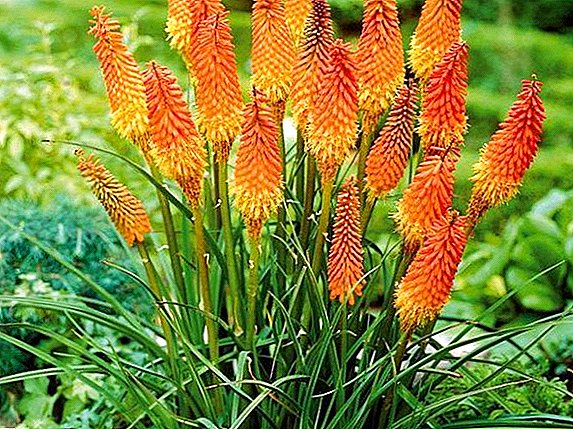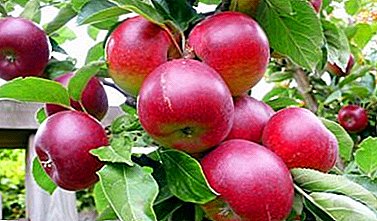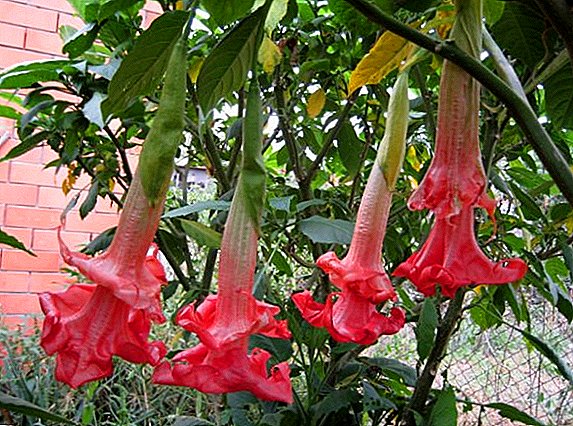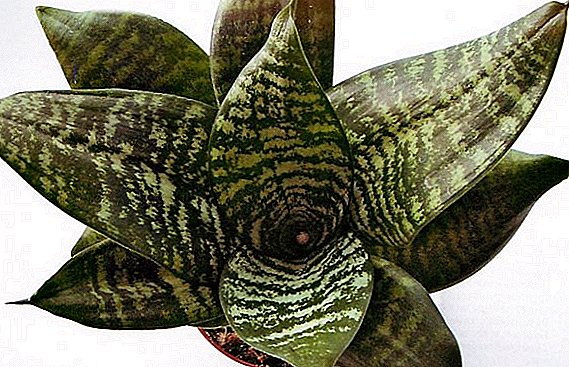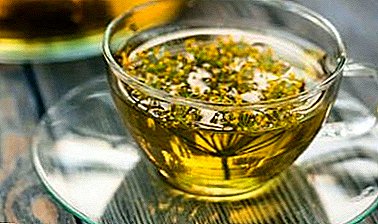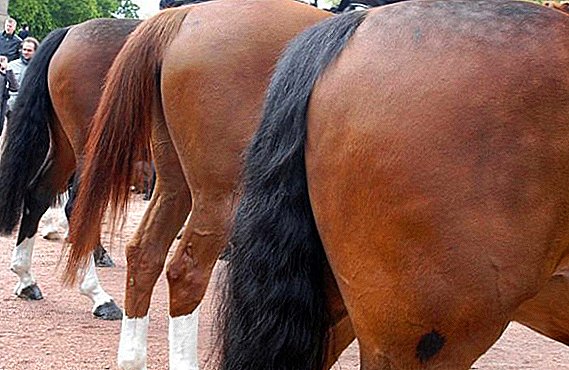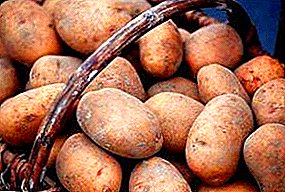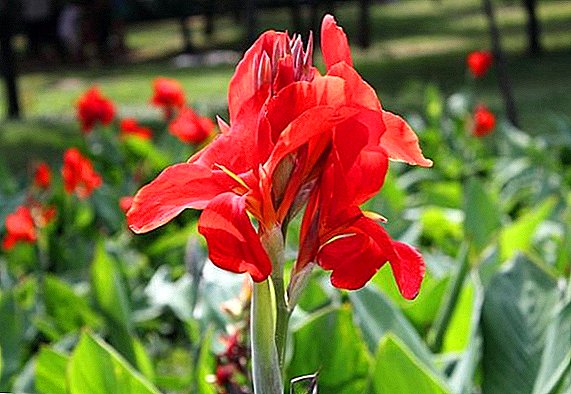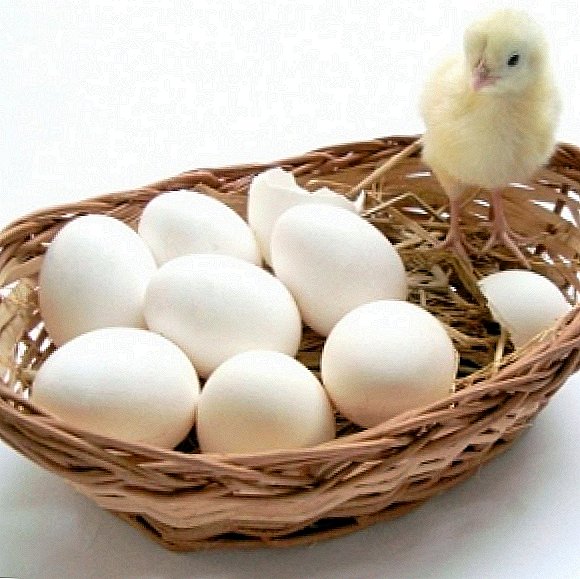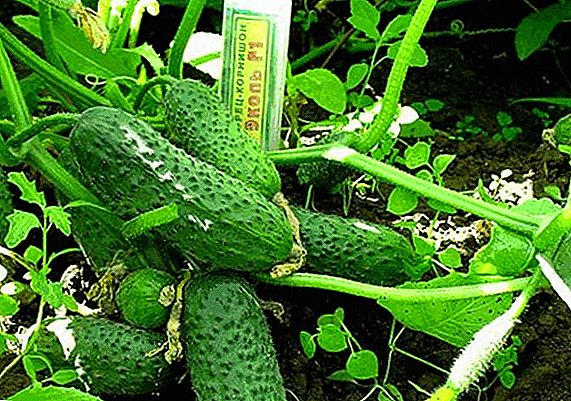 Choosing a convenient variety of cucumbers, it is often difficult to determine because of doubts in yield, resistance to disease, taste characteristics and characteristics of planting, cultivation, storage. In this article we will consider all the exciting questions regarding the Ekol F1 medium-early cucumber - one of the best newcomers of selection. At the same time count the pros and cons of the variety.
Choosing a convenient variety of cucumbers, it is often difficult to determine because of doubts in yield, resistance to disease, taste characteristics and characteristics of planting, cultivation, storage. In this article we will consider all the exciting questions regarding the Ekol F1 medium-early cucumber - one of the best newcomers of selection. At the same time count the pros and cons of the variety.
Breeding history
Cucumbers are mentioned in the Bible. But the modern varietal mid-season cucumber "Ecole F1" was developed by Syngenta Seeds (Syngenta Seeds B.V.), a company engaged in seed selection. She supplies the market with seeds today. The first tests of the Ekol F1 were in 2001. And in 2007 the variety was entered in the register. Seeds are obtained by crossing the "clean lines", which causes high yields on the background of the lines of parent varieties.
Did you know? In nature, there is a herbaceous plant with the name “Mad cucumber”: when ripe, it “shoots” seeds 6 meters under pressure inside the fruit.

Characteristic and distinctive features
Let's look at the characteristics of cucumbers "Ecole" and begin with a detailed description of the variety.
Check out these varieties of cucumbers: Libelae, Meringue, Spring, Hector f1, Emerald Earrings, Crispina f1, Taganai, Paltchik, Real Colonel, Competitor.
Bushes
The plant is medium sized and tall. Compact thanks to short internodes. It has few additional shoots, the growth of the main stem is unlimited. The leaves are dark green, medium in size and smaller. Perfectly recovers from stress.
It has a female type of flowering, it blooms with bouquets - it turns out several fruits in one node. "Ekol F1" refers to the group of parthenocarpic, and in accessible words - self-pollinated hybrids of early ripening.
Fruit
The length of cucumbers reaches 4-10 cm, and the mass reaches 95 g. The fruits are bright green, with blurred light short stripes and a small amount of spots. They have a smooth and beautiful cylindrical shape with medium-sized mounds and white spikes of high density. The length and width of green grass correlate to 3.2: 1.
The rind is thin. The flesh is crispy, tender and fragrant. In the middle there are no voids, the taste is excellent: sweet, without bitterness (a genetic feature).
Did you know? Cucumber contains 95% water. And thanks to 150 calories per kilogram, cucumber is a dietary product.

Yield
In numbers, it is equal to at least 12 tons per 1 ha. Even if we take the result of 293 centners per 1 hectare, this is already 72 centners per 1 hectare more than the harvest of the Aist variety, for example. Vegetation occurs for 42-48 days. In the first two weeks of fruiting - three samples of fruit. Harvesting does not end until early October.
Advantages and disadvantages
Cucumber "Ecole F1" - a respected hybrid variety. It is used in a wide range: for pickling, preservation, fresh use. Best of all, it shows taste in pickled and salted form.
pros
This cucumber on reliability - all cucumbers cucumber:
- You can always be sure of a high and stable yield. Provides its every fruiting node due to nine ovaries without pollination.
- Pickles and gherkins in the plural because of the bouquet type of flowering guaranteed.
- The taste of "Ekol F1" is excellent.
- Marketability is 75%, and storage is always a good companion to quality.
- It will not suffer from tobacco mosaic virus or powdery mildew, brown spot (kladosporioza), it is sufficiently disease-resistant.
- Unpretentious when growing.
- A distinctive feature of the variety "Ekol F1": fruits no longer poured when drought, lack of watering, but do not fall, like other varieties.

Important! What is F1? The sign says that these are the seeds of a hybrid of the first generation. That is, with a minimum area, you will receive a maximum of fruits. But the collected seeds will be unsuitable for self-germination in the next year.
Minuses
- Spiny greens are able to barrel and exhibit unattractive taste when picked up out of time.
- Vulnerability in lesions with downy mildew (peronosporozom).
- Seeds are unsuitable for planting next year if they are collected at home.
Growing cucumbers in a seedless way
Fruiting and growth perfectly adapted to open ground and greenhouses, greenhouses and shelters with a film. Since the variety is unpretentious, we will consider a running off-stream method.
Optimal timing
The end of May is the time of planting seeds for the climate of Ukraine. The required temperature for soil warming at a depth of 10 cm is + 15 ... +16 ° C (otherwise the plant will develop slowly). Another landmark is when the daytime temperature reaches + 22 ... +24 ° C, and at night - 18 ° C heat. 
Choosing a place
Medium loamy and loose soil fits perfectly, also wind protection and adequate lighting are required. The place of last year’s planting of potatoes, onions, pepper, legumes, cabbage is well suited.
Important! If you are an adherent of the rassadnogo method of growing, remember: picking is the weak point of cucumbers. Each plant has its own "home". Sowing is recommended in mid-April, and it is necessary to plant in the ground after another month.
Seed preparation
Seed material aged 2-3 years pre-soaked, and it will be more effective to use for this growth stimulants ("Epin" and "Zircon" or a solution of "Nitrofoski" and water with ash - 1 tsp.: 1 L: 1 tbsp. ). If the seeds are less than 2 years old, they are heated to 60 ° C. Seeds should lie in wet gauze or in a container with a solution at a temperature of + 25 ... +30 ° C until noticeable swelling for a couple of days.
Site preparation
If you plan to grow cucumbers "Ecole F1" next year, but the soil is not suitable - in the fall it's time to enrich the compacted and heavy soil with wood filings. Immediately before planting the seeds you need to dig up the ground, add dry manure or compost.

Sowing seeds: the pattern and depth
When planting it is important to water directly into the hole or garden before the seeds appear there. They are sown in the beds to a depth of 3 cm and the distance from one another is 15-17 cm. Rows between rows should be 60-65 cm. The holes also fit, each can be lowered to a depth of 1.5-2 cm five seeds away from one another.
Important! In the first few days it is important to cover the planted seeds with a film if the temperature drops noticeably at night.
Care features
Although "Ecole F1" and withstand extreme growing conditions, take care of it: water, weed, weed, loosen the soil, feed.
And if you want to ensure high yields, for the result, you should "dazzle" 6 knots from the bottom on each stem. This means - remove the ovary of the sinuses. The secret also contributes to the development of a strengthened root system. 
Thickening of the bushes is not suitable for preventing diseases and, consequently, the loss of the presentation of vegetables or the whole bush. 10 days after planting, thin the sprouts to a distance of 10 cm. At the time of the formation of the leaves, the procedure must be repeated, leaving 20-25 cm between the bushes.
Important! Unnecessary sprouts, it is important to remove, not pulling out of the soil, but with a knife. Neatness will protect the root system of neighboring plants.
Watering
A lot of water for cucumber is a necessity because of the location of the root system in the upper part of the ground. Due to lack of, especially in hot summer, taste and color, as well as yield, may deteriorate. Before flowering, water should be watered every 5 days, from the moment the ovary appears, every 3-4 days, and in other cases, once every 2-3 days.
It is recommended to water the plants with warm water heated to +25 ° C per day in the sun in a barrel with water in the evening or in the morning. The best way to spray (watering), so as not to damage the roots of plants. Day watering can cause burns on the leaves. In rainy weather, when the temperature drops, less water should be watered; otherwise, the root system will rot.

Preventive spraying
It should start with the appearance of the first three leaves on the stem and before the appearance of the fruit. 0.05% solution of the drug "Quadris-250 / SC" or 0.02% solution of "Pharmiod" are used for prophylaxis.
Top dressing
Cucumber grows on top, and therefore can not fully provide the necessary amount of useful trace elements. Help "Ekol F1" fertilizing, and he will provide you with yield. Feeding time - 4 hours before watering. After the procedure, be sure to wash the fertilizer off the leaves, because it can cause burns.
When the first two leaves appear after the landing, a solution can be prepared: 10 l of water + 10 g each of ammonium nitrate, potassium salt, superphosphate. After a fortnight, re-feed, but double the amount of dry ingredients. Every 7 days from the start of fruiting, a solution of 10 liters of water and 30 g of potassium sulfate should be added.
Support
For the "Ekol F1" variety, the optimal cultivation feature is supports to hold the bush vertically. This method allows to increase the yield due to a larger number of bushes and the ability to avoid the spread of disease (they almost always occur when in contact with the ground). Care bushes also decreases in time. 
For support use stretched trellis wire, rope or lattices of iron, wood. Removed all shoots that have developed 30 cm below the support. Do not miss the time when the stem grows to the wire: then it is important to wrap it twice around the trellis, lower it down and pinch the growth point, retreating 3 leaves.
Harvesting and storage of the crop
The optimal size for cucumbers "Ecole F1" when harvesting - 5-7 cm (green men). Pickles reach 3-5 cm in length, and gherkins - no more than 8 cm, but not less than 4 cm.
It is necessary to collect cucumbers every 2 days in the morning or in the evening, simultaneously removing the yellowed shoots and rotten leaves. Fruits "Ekol F1" quickly overripe and become unsuitable - tasteless, large, tough. Everyday picking will provide a constant large number of pickles and increase yields.
Important! During harvest, you need to be as careful as possible not to damage the plants! You can use a pruner or a knife, leaving the stem on the stem. And to take care of your own hands, wear work gloves.The first cucumber appears six weeks after planting seeds in open ground. You can continue harvesting until September-October. If you want to plant a cucumber in the same place next season, be sure to remove all the fruits and stems from the garden.
 The shelf life of fresh fruit - a few days (the best option - 5) in a cool and shady place. In the refrigerator - 7 days. And in a package with a damp cloth, you can and all 10 days!
The shelf life of fresh fruit - a few days (the best option - 5) in a cool and shady place. In the refrigerator - 7 days. And in a package with a damp cloth, you can and all 10 days!Evaluate the advantages and disadvantages of "Ekol F1" and choose! The cucumber was chosen by the Roman emperor Tiberius, Napoleon and the Egyptian pharaohs.


